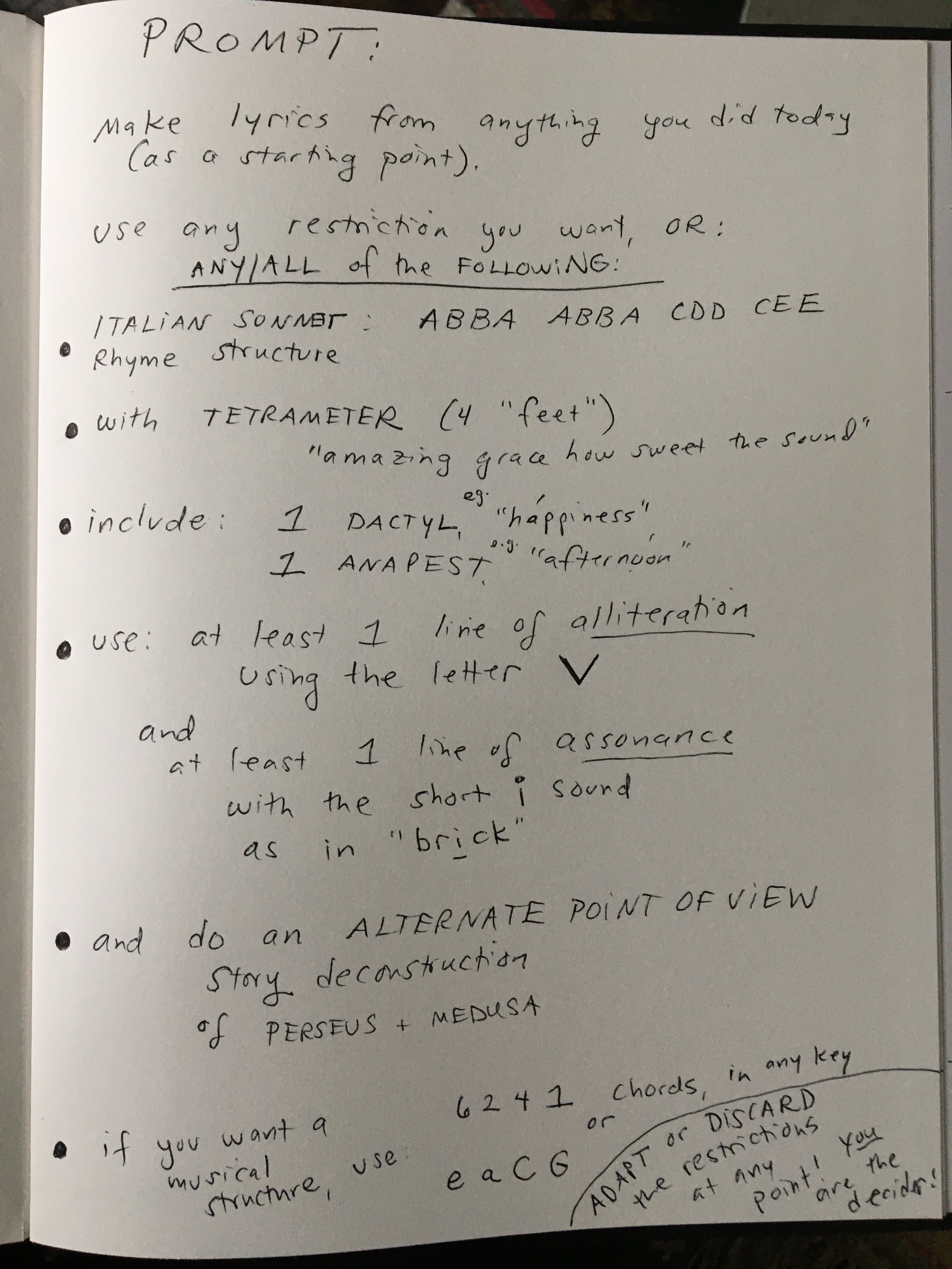Music Therapy, part 3: Creative Aspect
As I said in Part 1 and Part 2, music therapy engages our innate musicality for healing, and is healing whether we are only listening, or also playing.
Here is a third way to think about music therapy.
Creative Aspect
Music can, obviously, be used creatively, to generate songs or sound art pieces which are intended in some way to stand alone as legitimate pieces (not just explorations or experiences). Creating music pieces in this way accomplishes poiesis, or making a distinct “something” which did not exist before. Poiesis has many therapeutic benefits for people, including helping with identity discovery and Self-actualization.
Healing generally involves three things: 1. creating a safe-enough container inside of which the healing will take place; 2. getting in touch with, amplifying and giving expression to a troublesome portion of us, as well as forging an antidote to this pain; and 3. wrapping it all up and synthesizing it into a new thing that wasn’t there before we had the dark journey, thereby creating meaning and growth from our suffering.
The creative aspect of music helps a lot with all stages of this, but is especially linked, perhaps, to number 3, the stage of healing when we are ready to look back on ourselves and define what the experience means for us.
My invitation to you for exploring the Creative Aspect of music:
Make a music piece, which is intended as art. (Tell your Inner Critic it doesn’t have to be great art, just any old art).
All this means is you are making a distinct piece, and you are composing/putting it together deliberately, somehow, some way, not only expressing and getting energies out, but also thoughtfully placing things together.
Absolute Beginner? Write New Lyrics for a Song You Know
There are many ways to make this more approachable for yourself. One easy one is:
Take a song you know very well, which you like, and change the lyrics to make it your own version of that song. Many folksongs are simply rewritings on a familiar tune - here you will do the same.
If you would like me to give you a place to start, take the song Amazing Grace, which you probably know, and rewrite the lyrics to reflect on your own story, keeping the I once was like this, but now I’m like that kind of phrasing. If you do not know it, it is a simple song if you skippy the vocal gymnastics and you can hear it here: https://youtu.be/u0Y3Mi6tKU4
Beginnerish? Write a One Chord Song
Try making something from scratch, in the 1 chord song format. Yep, all it is one chord, and then you make some kind of a song using that one chord, and it only has to be 1 minute long.
Alternatively, you can use a premade backing track and make your song over it.
Here are some pop/rocky backing tracks that could be fun for you:
https://garretsguitarlessons.com/modal-backing-tracks/
Old hat? Write your own What a Wonderful World
If you’ve written a few songs before, and you just need a loose structure to get going, then my invitation to you is this:
Write a song along the lines of the song What a Wonderful World by Louis Armstrong, in which he lists things that he sees in his world, that he loves and which make him think to himself “what a wonderful world”.
Start by generating a list of all the things you see, hear, taste, touch, and smell that cause you to feel feelings of love and goodness in the world.
If you would like some chords, use E major, f# min, A major, and B major.
If you would like a lyrical structure, you can use this format:
2 verses, each 4 lines in the ABCB rhyme pattern
Chorus of 4 lines in the DDDD rhyme pattern
3rd verse in same ABCB rhyme pattern
Chorus (repeating previous one)
Bridge 2 lines of EE
Chorus (repeating previous one)
This is a template - adapt as you like.
Looking for a challenge? Give Yourself A Houdini Prompt
Here is a very complicated prompt from a workshop I gave recently. There are suggestions to play with, & you can take what you like & leave the rest. I’m calling it a Houdini because it’s very restrictive, but for that reason, will push new kinds of creative breakthroughs.
Remember. You’re experimenting in the creative channel, not creating your magnum opus (just now).
Have fun! :)
Play around with the Intermodal Aspect of music in part 4!

